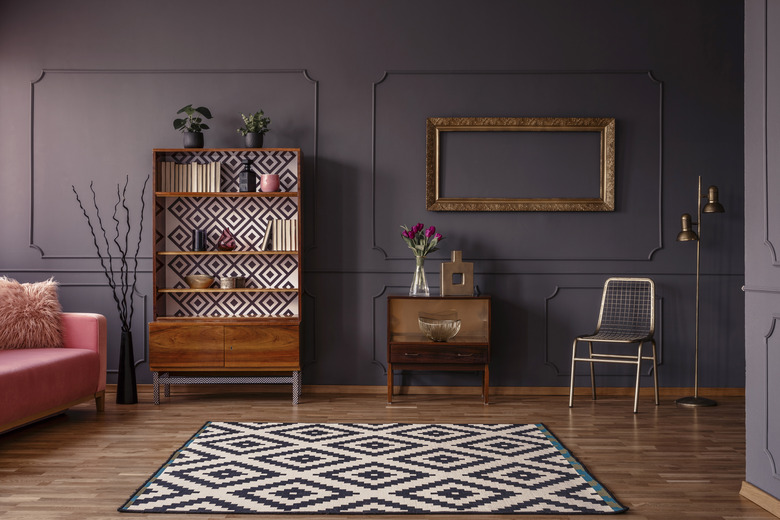What Colors Do You Mix Together To Make The Color Eggplant?
Looking for a rich, deep color to add to your home? An eggplant or aubergine color is a dark, deep combo of reddish-purple or brownish-purple that can add depth and style to any painting project. The veggie may be well-known in delicious eggplant recipes, but the striking color transcends beyond the kitchen counter. An aubergine color blends wells with contemporary or traditional décor and can be used as a neutral color, an accent wall color or as a statement piece when applied to furniture or cabinets.
What Colors Make Purple?
What Colors Make Purple?
Eggplant vs. plum: both are purple, but both are slightly different. To create any purple color, a mix of red and blue are needed. Red, blue and yellow are primary colors, aka, the root colors of all the other colors that are created. In color theory, these three colors are the building blocks of the color wheel.
The combination of these primary colors creates secondary colors. Mixing blue and yellow together creates green, mixing yellow and red creates orange and mixing blue and red creates purple. The simple mix then needs tone, tint and shade to build a more complex color like an aubergine color. The resulting mix is called a tertiary color. Red and purple mixed together create a complex tertiary color that can be used with white or brown to create an eggplant or plum hue.
What is Aubergine Color Like?
What is Aubergine Color Like?
The luxurious aubergine color is a mix of red and purple and sometimes carries a hint of brown. When making your own eggplant color, you can determine how red or brown the color leans. As noted above, mixing a warm red and blue (two primary colors) together results in purple (a secondary color). To create a hue that's closer to eggplant than plum, another mix using white, black, brown or gray will be needed after the initial two primary colors are combined.
Warm reds are needed as opposed to orange-reds or dark pinks. Try a warm red like strawberry, deep blood red or even a red-violet that already has a tint of purple. Since aubergine color is a reddish-purple, there will be more red than blue needed, but don't go overboard with the red. Add a white tint to the mix to lighten the color. Then, tone the shade with brown, gray or black until the right eggplant color appears. Make it your own shade by playing with light whites and darker tones until the color reflects the complex shine of an eggplant.
What Other Colors Look Good With Eggplant?
What Other Colors Look Good With Eggplant?
Those looking to add a splash to their wardrobe may try an eggplant color dress; the hue works like navy or black as a neutral that can be paired with large jewelry or as a bright standalone. Colors that are complementary to eggplant are on the opposite side of the color wheel. These are hues of orange-brown, yellow or green, depending on the wheel used. For example, a saffron yellow pillow against an aubergine color sofa would make a room pop.
A bright aubergine color statement wall could house green, leafy plants or prints in tints of light green. Brownish cabinets or furniture pieces that lean toward orange could use an aubergine color trim for a striking contrast. Eggplant also works well with jewel tones like a ruby red or sapphire blue.
Don’t Forget Paint Sheen
Don't Forget Paint Sheen
Mixing your perfect aubergine color can be ruined if paint sheen is neglected. Paint sheen affects how the color will actually look when painted on your wall or furniture. A flat sheen won't reflect light in the same way a gloss sheen will, making your color appear dull or dark.
Since aubergine color is a bold choice for a room, go bold with your paint sheen and opt for a satin, gloss or semi-gloss paint when mixing your perfect hue. The extra shine will reflect the light and help make the color pop.
